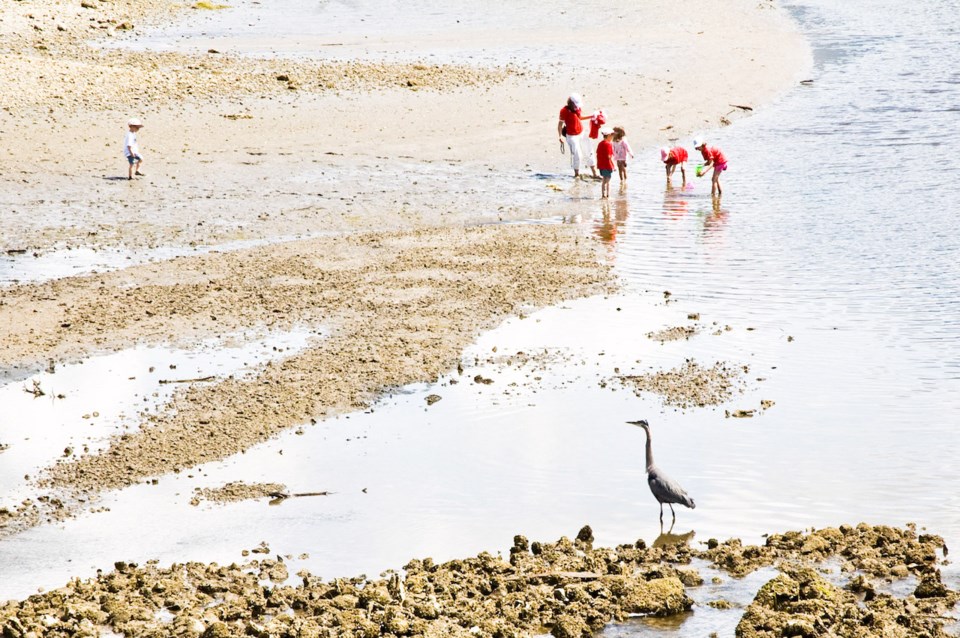Bowen’s shorelines are beautiful, highly valued places, especially in the summer months. And the shoreline, where land and sea meet, is constantly changing.
Shorelines are critical to the survival of many land and sea creatures. They are also highly desirable places for people to play, enjoy the view and connect with nature. Bowen’s shores support a great variety of marine plants, invertebrates, fish, migratory birds and marine mammals. They are one of the richest and more diverse temperate environments in the world. These biological communities are created and influenced by combinations of physical and factors: the interaction between the land and sea and how water moves along the shore.
For example, kelp beds and eel grass in the water can help dampen the impact of wave energy while shoreline plants and trees just above the high tide mark can help to stabilize the shore from erosion.
The plants found below the low tide mark in deeper water also provide cover and places to attach for a diverse fish and invertebrate community.
Closer to shore, in the intertidal area, you might see rockweed, limpets, mussels and periwinkles clamped to a rocky shore. Take a closer look in the sand and gravel and you may spot the shuffling shore crabs, sliding moon snails, clasping clams and maybe even a burrowing sea cucumber. Healthy marine waters are also important to migratory birds, mammals (think orcas and humpback whales) and fish such as salmon.
Did you know that much of a young salmon’s diet comes from land-based sources? Trees and shrubs, such as Douglas fir, salal and ocean spray, above the high tide mark are a great place for insects to live. When these insects fall into the water, they are snapped up by young salmon. The insects, as well as forage fish (like sand lance) are critical components of a salmon’s diet. In turn, salmon are a key source of food for the Orcas found in Howe Sound. Without the insects, ultimately, the Orcas will find it harder to survive.
Do you want to find out more about Bowen’s shorelines? Join us at a beach walkabout with the Bowen Nature Club on June 16. For information go to: bowennatureclub.blogspot.com/ or [email protected].



